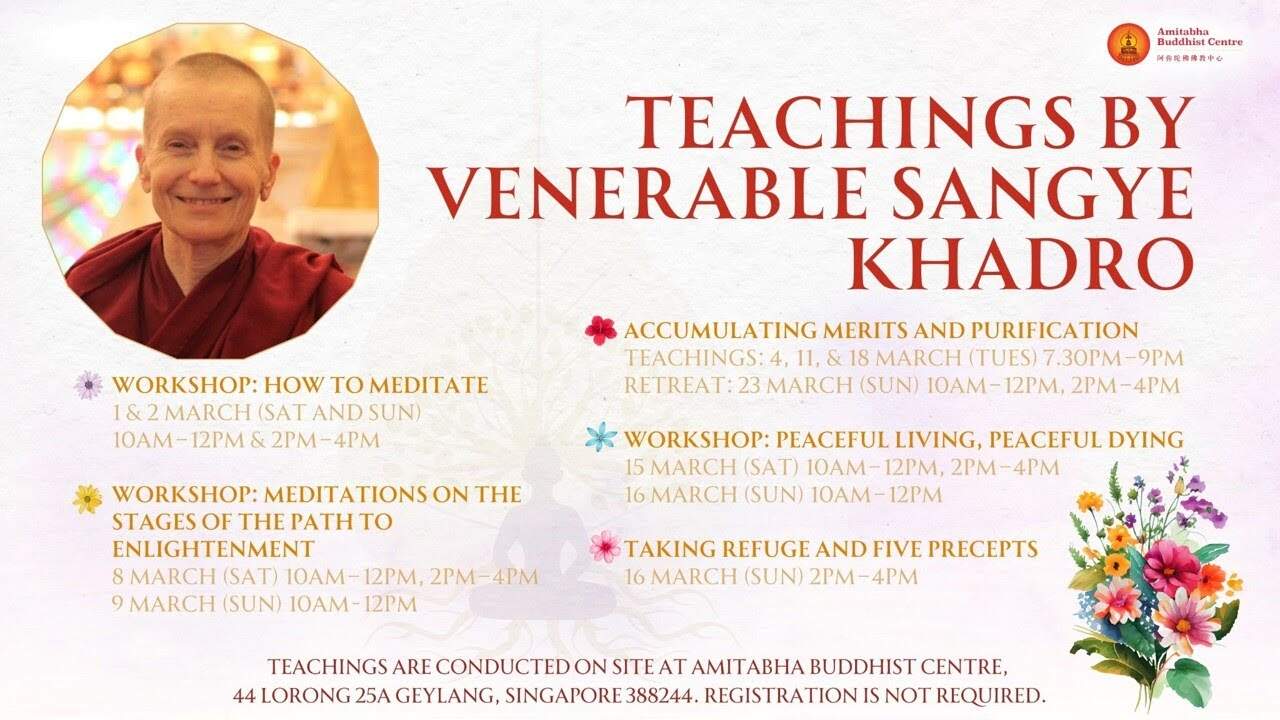The importance of developing serenity
46 Following in the Buddha's Footsteps
Part of an ongoing series of teachings based on the book Following in the Buddha's Footsteps, the fourth volume in The Library of Wisdom and Compassion series by His Holiness the Dalai Lama and Venerable Thubten Chodron.
- Description of serenity
- Diligent effort and continuous practice to cultivate and maintain serenity
- Importance of developing a broad understanding of the path and cultivating a proper motivation
- Stabilizing meditation and analytical meditation
- Serenity and insight
- Benefits of cultivating serenity
- Supernormal powers and super knowledges
- Bodhisattva path and tantra
- Collection of merit and collection of pristine wisdom
- Verses from Atisa’s text
- Conditions conducive for the development of serenity
- Favorable place
- Near other meditators and teachers
46 The Importance of Developing Serenity (download)
Contemplation points
- Why is it important to develop a broad understanding of the Buddhist path and cultivate a proper motivation if we want our efforts to cultivate concentration to bear fruit?
- What are the two types of meditation and how are each of them used in our spiritual practice?
- What are some of the benefits of attaining serenity and the dhyanas mentioned in the text? Spend some time contemplating these and how they might be helpful in your own spiritual practice. How would it make a difference in your life and how you interact with others and the world around you? With this awareness, aspire to improve your concentration.
- What are some of the factors that influence our ability to meditate? Why are these essential for a practitioner who is entering retreat with the aspiration to attain serenity? For practitioners who are not in retreat, how can having as many of these as possible benefit spiritual practice? What can you do to create some of these conditions in your own life and practice now?
Venerable Thubten Chodron
Venerable Chodron emphasizes the practical application of Buddha’s teachings in our daily lives and is especially skilled at explaining them in ways easily understood and practiced by Westerners. She is well known for her warm, humorous, and lucid teachings. She was ordained as a Buddhist nun in 1977 by Kyabje Ling Rinpoche in Dharamsala, India, and in 1986 she received bhikshuni (full) ordination in Taiwan. Read her full bio.


